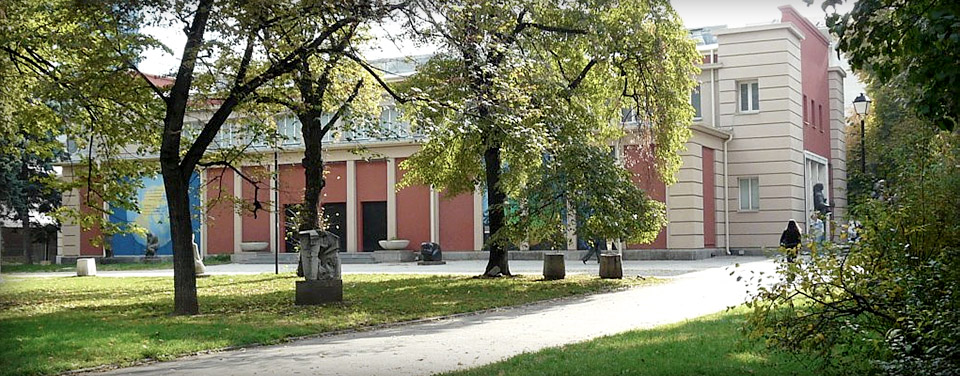In 1928, the Sofia Municipal Museum was established. It consisted of three departments – Museum, Library and Archive. The establishment of "picture gallery" was an important part of the activities of the museum. From 1929 to 1941 when a specially constructed building for the Sofia City Library and Museum was opened at 3, Banski Square (it was later destroyed during the bombings) the museum occupied different buildings. For the first time, the Sofia picture collection was exhibited there.
In the first several years following World War II the museum went through different stages of development and changes. In 1948, part of its art fund was transferred to the newly-established National Art Gallery in order to lay the beginnings of its art collection. In April 1952, the library and the archive were detached from the City Museum and in October of the same year, with decision of Sofia Municipality, the Sofia History Museum and the City Gallery were pronounced individual institutions. The Sofia City Art Gallery had no exhibition space of its own and from the late 1950s to the mid-1960s it exhibited its collection in a hall located on 11, Levski Str. After 1964 when the hall was destroyed, the works from the funds were exhibited in different cities and towns in the country.
It was only in 1973 that the Gallery was granted its own space in the building on 1, Gen. Gurko Str. It opened in 1977. In the mid-1970s, the Sofia City Art Gallery preserved 2 607 works distributed in three departments – painting, graphics and sculpture. Today, the Museum has four departments – painting, sculpture, graphics, contemporary art and photography. Its collection consists of more than 8 000 works of Bulgarian artists from the late 19th century to this day. Part of the sculptures are exhibited out in the City Garden.
Over the years, the Sofia City Art Gallery established itself as an important cultural space for the capital. After the fall of the state socialism in 1989, the exhibition policy of the Gallery is open for a broad spectrum of thematic, genre, style and historical exhibitions. A number of initiatives and exhibitions are dedicated to the rationalization of the time of the socialist regime – retrospective exhibitions about leading artists such as Ivan Georgiev – The Rembrandt (curator Krasimir Iliev, 2008), "Lika and Genko" (curator Krasimir Iliev, 2010), Angel Stanev (curator Krasimir Iliev, 2012), Ziyatin Nuriev (curator Krasimir Iliev, 2016) and others. The conceptions of the thematic exhibitions belong to professional curators at the Sofia City Art Gallery (for example the exhibition "Forms of Resistance", curator Krasimir Iliev, 2016; "Visual Chronicles. Nine Portraits of Painters from the Second Half of the 20th Century", curators Mariya Vasileva and Daniela Radeva, 2017). At the same time, people from other spheres of the culture are being invited to offer their point of view on the art preserved at the Sofia City Art Gallery from the time of socialism. Such an exhibition is "The Afternoon of an Ideology" (2016) whose curators are Georgi Lozanov, expert in media and journalism, and Georgi Gospodinov, writer.
The Sofia City Art Gallery is engaged in scientific and publishing activities as well as in educational programmes. It expands the circle of its audience by organizing meetings, lectures, debates, presentations of books, concerts, film-shows on the topics of the exhibitions and/or video-interviews with artists. Today, the Gallery is a territory for dialogue between the generations of artists and the cultural public which also contributes to the analysis of the development of the Bulgarian art within the global processes.

